I have never been to Weehawken, New Jersey. Not once! And that’s fairly odd, since my visits to other urban New Jersey Hudson River-side locales, such as Jersey City and Hoboken, have been fairly frequent the last twenty years. It’s all about the PATH train. I can be in Hoboken and JC in minutes from midtown Manhattan, and even places like Newark and Nutley, accessible from Newark’s “City Subway” surface line. However, now that the Hudson-Bergen Light Rail has been extended through Weehawken these last couple of years, I might make it yet. I’m aware of its historical significance — it’s where Alexander Hamilton was shot by Aaron Burr, and I am aware it has a wealth of dead ends and picturesque step steets to explore, and fine Manhattan views.
By some accounts “Weehawken” is derived from a Lenape Indian phrase meaning “rocks that look like trees.”
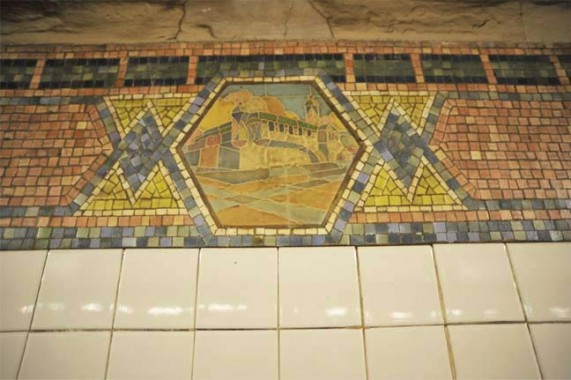
The short lane, which runs between Christopher and West 10th Streets just east of West Street, stands on what, in the colonial era, was on the grounds of the Newgate State Prison. Nearby Charles Lane is a Belgian-blocked alley that used to run along the prison’s north wall:
…. Newgate Prison [stood] in the West Village between 1797 and about 1828 at the Hudson River shoreline, bordered by Washington, Christopher and just south of where Perry Street would later appear. Newgate was NY State’s first penitentiary, and pioneered radical correctional policies such as allowing prisoners light in their cells, water to bathe, no corporal punishment, visits from families, and rehabilitational training. By the late 1820s, the prison was no longer isolated and was surrounded by streets and businesses, and transferred to Ossining in Westchester County, the prison known popularly as Sing Sing (land on which the prison was built was called Sintsink by the Indians) from above link.
Above: The Newgate State Prison is depicted in the mosaics of the Christopher Street station on the IRT #1 train, on the 7th Avenue Line.
After Newgate’s prisoners were transferred to Sing Sing, NYC reserved the waterfront area between Christopher and Amos (later West 10th) for a public market. Weehawken Street owes its existence to this market, as it was laid out around 1830 to accommodate wagons bringing produce to and from the market, serving the small wholesalers built along its length. Christopher Street was also widened in this area to accommodate the market. Farmers from New Jersey locations — prominently, Weehawken — set up stalls in the market.
Despite its opportune location the Weehawken Market did not successfully compete with the larger Washington Market further downtown (in a plot now occupied by the Independence Plaza Apartments). The market was abandoned in 1844 and plots were sold off to private owners who proceeded to erect a variety of structures on the west side of Weehawken Street. Developers had already been busily constructing buildings on the east side of the street since it was opened in 1830.
Let’s take a look at Weehawken Street’s buildings…but before that, we have a memorial.
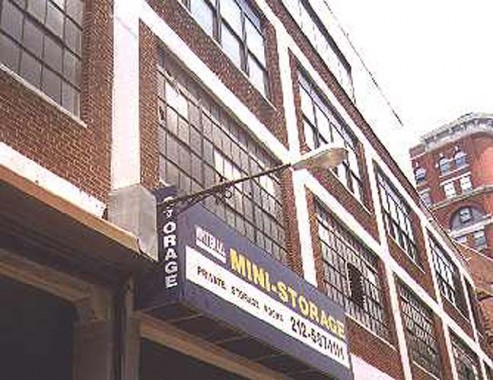
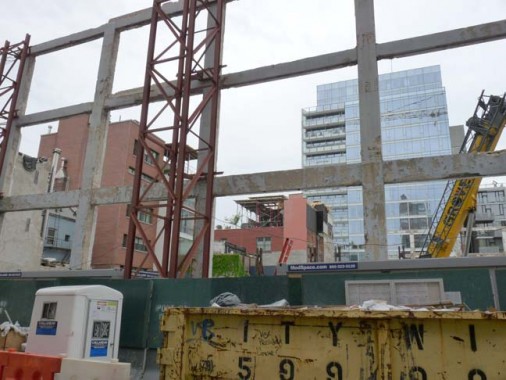
In 1999 I photographed a Type G wall bracket streetlamp on a large storage warehouse on West 10th just east of Weehawken street, but by the time I returned in 2013, the warehouse, and its lamp, were just about gone.

The southeast corner building on West 10th and Weehawken Street is among the younger buildings in the area. It was constructed in 1873 for brick manufacturer Charles Schultz as a tenement housing eight families and a store. By 1896 the ground flor was occupied by a saloon called the Plug Hat, and into the 20th Century the house was owned by brewers and saloon keepers. In 1961 the last saloon moved out and the ground floor was converted to a laundry.
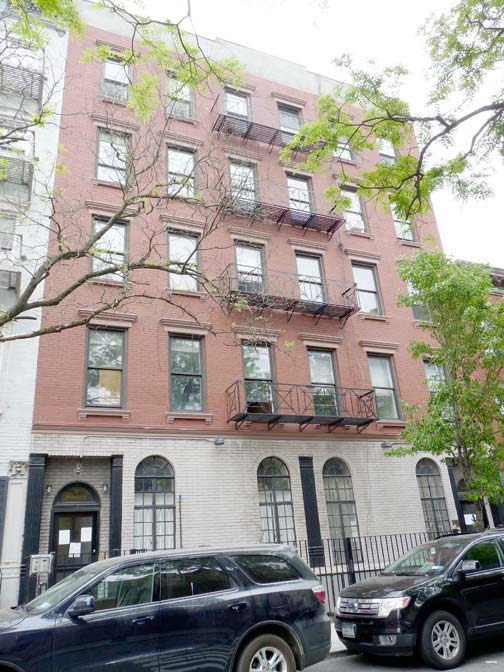
Nos. 3-5 Weehawken, on the east side of the street, was constructed by architect Mortimer Merritt as tenements in 1876-1877, as tenement housing for the nearby Beadleston brewery, which had actually purchased part of the old Newgate prison and incorporated it into the brewery building. Prohibition took a toll and the brewery was demolished in 1937. The ground floor brickwork was added in 1928.
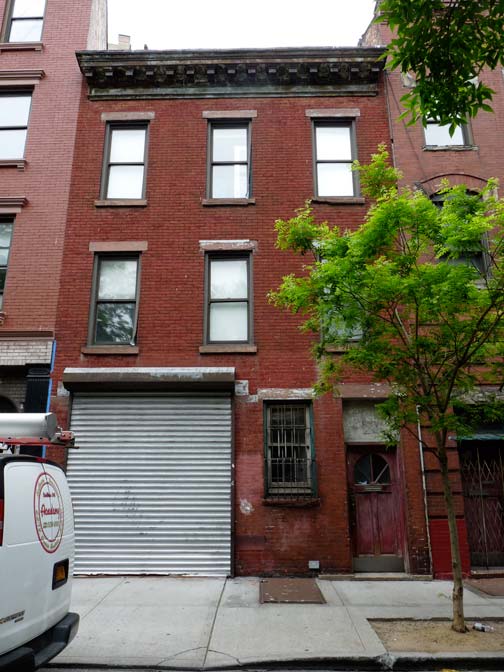
No. 7 Weehawken Street goes back to the dawn of Weehawken Street as it was built when the market was still open in 1830, for New York City Superintendent of Repairs Jacob Roome. In 1845 it was bought by Cornelius Van Schaack Roosevelt, the grandfather of future President Theodore, and remained in that family until 1920. The building originally had a ground floor stable that was altered into a garage and auto repair shop in 1921. In the 1950s, the building and plot were acquired by Meier & Oelhaf Marine Supplies, which combined the #7 lot with their adjoining holdings in 1971.
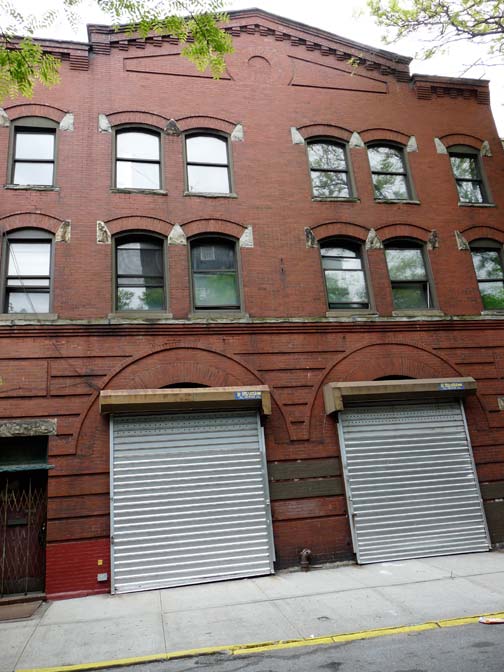
#9-#11 Weehawken Street was constructed as a stable building in 1908 by Thomas Lynch, replacing two other Beadleston brewery tenements, and was converted to an auto garage in 1922. For most of its history it has been used as an auto garage, electrical contractor and as part of the Meier-Oelhaf marine repair operations. Like #7 the building is privately owned today.
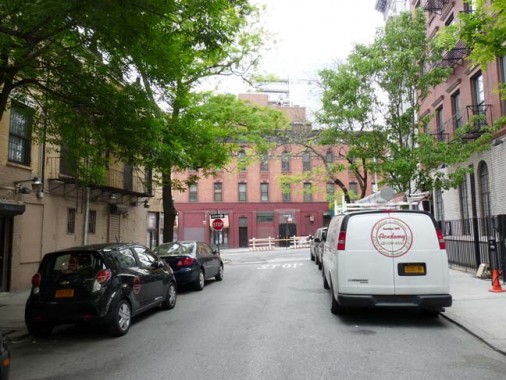
A look north on Weehawken Street toward what was originally….
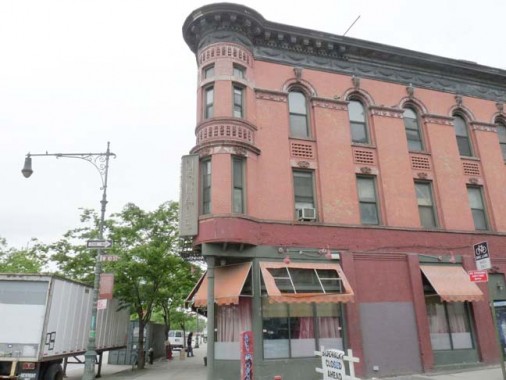
…the Holland Hotel, on the NE corner of West Street and West 10th, cosntructed in 1904 by German immigrant Albert Adler. It has been home to hotels, men’s haberdashers, coffee shops, food markets, barbershop, uniform wholesalers and gay bars over its long history. The building is comparable in appearance to when it was built.
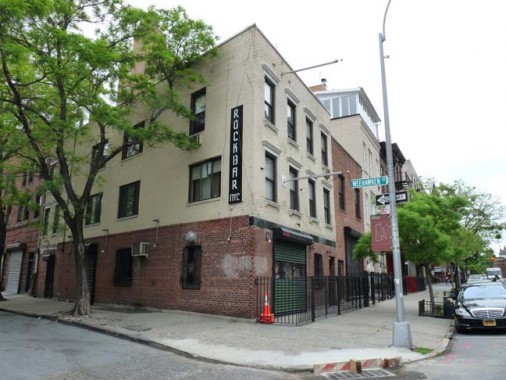
185 Christopher, on the corner of Weehawken, stands on a plot originally developed by Stephen Allen, a former mayor of NYC, in 1829; Allen served from 1821-1824. Allen, a wealthy sailmaker and banker, recommended the closure of the Newgate Prison during his term. He perished in the crash of the steamboat Henry Clay in the Hudson near Rivedale in 1852. Allen first constructed a warehouse on his property here in 1837; after Allen’s death, wealthy Scottish merchant James Lee acquired the property, including the warehouse, and expanded it into the corner building seen here. The building has seen a variety of uses similar to its fellows along Weehawken Street. Until recently the ground floor was home to gay bar The Dugout.
The 2nd oldest building on Weehawken Street also fronts on West Street and is known as both #8 Weehawken and #392-392 West Street. By many accounts it is the only building left over from the old Weehawken Market and one of the few wood-frame buildings left in Manhattan. It had been in a row of similar buildings that had all been demolished by 1937.
Quoting from the LPC Designation Report (which is almost unnecessarily thorough on the Weehawken Street Historic District; q.v. for many more details on this historic building.
Helen Tangires, in Public Markets and Civic Culture in Nineteenth-Century America (2003), described the prototype for this kind of market house:
The simple, freestanding shed was the most prolific type of market house, lending itself well to a street location. It had been a standard form in colonial America… Open or closed, it consisted of arches of stout timber or brick pillars supporting a low-pitched gable roof. Builders occasionally added wide projecting eaves to increase the space for marketing. Sheds provided minimal protection from the elements for the least cost, did not require an architect, and were quick to build…. In addition, the shed’s multiple entrances made the market attractive and accessible to patrons coming from any direction; its openness promoted air circulation and helped in unloading goods; and it was easy to wash down at the end of a market day.
The building is a one-of-a kind example of postcolonial architecture and a reminder of NYC’s maritime legacy.
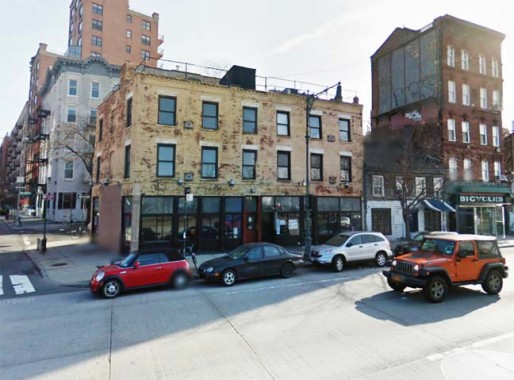
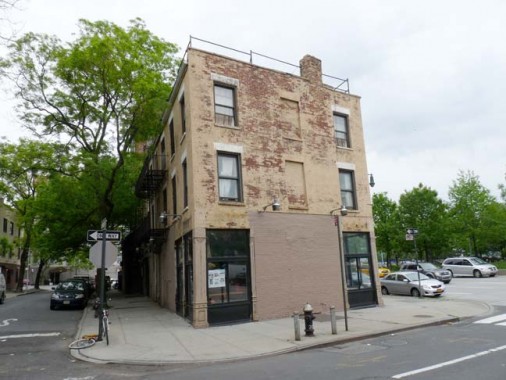
One more venerable building wedged between West 10th, Weehawken and West Street is #394-395 West, built for oyster dealer William Forsyth in 1848. For most of its history it has been home to comestibles dealers, lunch counters, grocers and liquor stores, as well as The Ramrod in the 1970s and 80s.
A recent Weehawken Street casualty seems to be the four hand-lettered signs warning passersby and cabbies against urinating in the alley. After all, people live here.
5/30/13


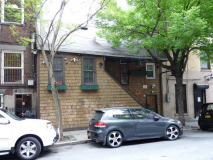
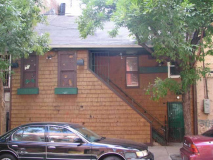
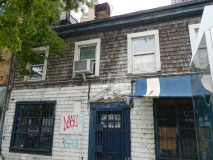
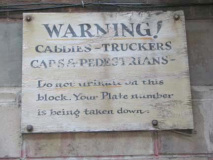
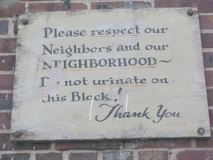
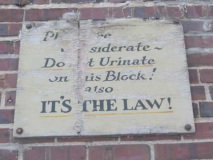
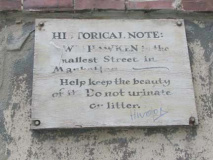
25 comments
Looks like somebody urinated on those signs,too
Just a little side note, if you ever been coming out of the Lincoln Tunnel on the NJ side, you’re in Weehawken
Weehawken’s over-rated. I’d avoid it.
Sincerely,
Alexander Hamilton
…and I’d avoid the theatre.
– A. Lincoln
well i hope so!!
weehawkin, new jersey and/or weehawkin street?
Cornelius Van Schaack Roosevelt was the grandfather, not the father, of President Theodore Roosevelt. Theodore’s father was also named Theodore.
Thanks for the info
Kevin, even you yourself always said that it’s always good to take a picture of a particular place like what was shown in the first few, because if it’s not landmarked , it may have good chance of being demolished or removed.
A friend who used to own a bar in the wooden house says that she was told that it had been used as the waiting room for the Weehawken ferry, with the ferry captain living in the upstairs.
Gary are you still around? Did your friend own Sneakers. I’d like to find some interior photos.
Gary’s friend must have meant the Hoboken Ferry that ran to Christopher St. That’s an old one, going back to 1838 (decades before the railroad in Hoboken). I can believe the captain lived nearby in early days. There were probably not many buildings on the Jersey side.
I was hoping it was the Weehawken Ferry so that it would explain the street name, but, alas, the master list of ferries in Cudahy’s “Over and Back” book doesn’t support it.
I can vaguely remember my father taking us on a car ferry to visit my aunt in Jersey in the mid 50’s. It wasn’t the Staten Island ferry, but from somewhere in lower Manhattan. Were the Hoboken and Weehawken ferries still in service back then?
Anyone who’s watched “The Honeymooners” may recall that one burning issue was “Which is more authentic, the Canarsie or Weehawken style of Mambo?”
America is the damnest place to go to the bathroom. no public washrooms even in some of the restaurants I don’t know what those funky little monkeys are complaining about at least they are going in the alleys!
People that live in New York may have found their own solution to this problem, but as a country-boy with a small bladder, places like New York City are nearly inaccesable due to the lack of bathrooms. I used to visit New York fairly often and enjoyed exploring the city, but the experience was always marred by that. Exploring Manhattan for instance meant spending about half of the time catching the subway to Central Park and back since not even the subways have public restrooms.
With that said, if I have a choice between peeing in an alley and peeing my pants, I’ll take the alley every time. No apologies offered or given.
just a suggestion. starbucks are usually pretty tolerant.
I’m such a fan of Forgotten NY’s history of NYC, and it informs my drawing-a-day project. A sketch of the former Holland Hotel here: http://nicks-lunchbox-service.tumblr.com/post/107822425749/lunchtime-drawing-a-building-with-a-turret
I love your website. It is both educational, as well as a fun walk down memory lane.
The 2nd oldest building is actually 8 Weehawken Street (not 6 Weehawken). My mother lived there from 1986 to 1992 (after living at 165 Christopher Street). The gay bar that operated on the first floor was called “Sneakers”. My mother owned and operated “The Underground” and then “Underground Leathers” at 390 West street (in the same one-story building that housed the Badlands) from 1977 to 1992.
You can see some of the storefront, with black and white awning (and the Ramrod’s too) as well as some great shots of old New York in the Village People’s YMCA video on youtube.com at: https://www.youtube.com/watch?v=CS9OO0S5w2k
Keep up the great work at forgotten-ny.com!
And I forgot to add, those signs about not using Weehawken Street as a bathroom were penned by Joe Rouse, who was a local artist who did those had-written signs and drawings for business owners up and down Christopher Street in an age where getting signs made was not as simple as opening a laptop, or going to Kinkos or Staples.
Hi Michael, I would love to talk to you a little more about these signs and the business your mother ran, if you are still around please reach out!
Hi Anonymous,
I am still around and have a ton of history and memories from those good old days. Feel free to ask any questions you have.
Hi Michael,
Sorry for the delayed response. Do you know what ever happened to those signs? I also believe that as you mentioned, there is a lot of uncertainty around the age of the houses in this area. I’ve even read that 6 Weehawken could date back to the 1780’s! Why do you say that 8 Weehawken is the second oldest home in the area?
Looking forward to your response!
does anybody remember the character, whom i called mel, back in the early 80’s who had a throaty, raspy new york accent., who sold poppers and meth on a table at the corner of christoper and weehawken streets. everytime i passed him, i would say: BENSONHURST, BROOKLYN??!!
two questions: does anyone remember a character named Mel or something of that nature who sold poppers and the like on a table at the corner of weehawkin and christopher in the early 80’s? Also, does anybody rember the wild disco Peter Rabbit’s on West 10th and Weehawkin? if somebody out there does, i’d love to hear from you.